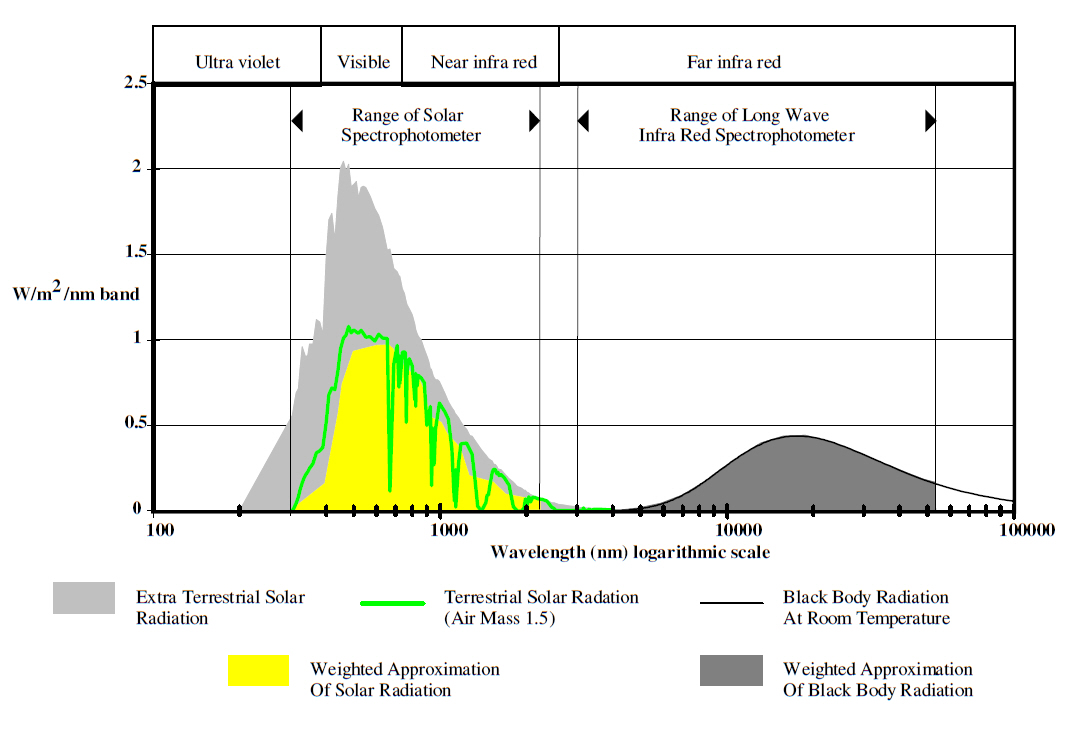Colour in the built environment
Everything that an individual perceives visually that is not to do with their perception of shape, size, surface texture, tone and motion of objects can be termed ‘colour’. Excluding colour-blind people, everything that we see has some colour associated with it. Some substances, such as oxygen, are colourless.
For colour to be perceived or to cause a sensation of colour, the following conditions must be satisfied:
- Light (a form of electromagnetic radiation) of a certain wavelength must be emitted, transmitted or reflected by an object. The wavelength will determine whether that colour is green, red or blue or a combination of these, and
- A properly functioning physiological system must be possessed by the individual to allow colour to be perceived.
Colour can only be perceived due to the presence of light and most light sources produce different light wave combinations.
Visual light comprises a wide range of different colours which can be seen by using a prism to split it into its constituent colours. This range of colours is called a ‘spectrum’ and the colours, each with a different wavelength, are always in the same order, from red at one end through orange, yellow, green, blue, indigo to violet at the other end. Red is associated with long waves, green with medium-length and blue with short waves.

|
| The full electromagnetic spectrum. Visible light falls within the range of wavelengths from approximately 380 - 740 nanometers (nm), between the infrared and ultraviolet wavebands. |
In reality, there are many, many different colours in the spectral range because it is seamless, as one colour gradually merges into the next. Each colour has its own wavelength of light which stimulates the cone cells (colour receptors) in the human eye in a different way to produce the various sensations of colour. So, when we say that ‘the banana is yellow’, it would be more accurate to say that a sensation of yellow is generated by an area of the retina (at the back of the eye) that corresponds to where light rays from the banana are being received.
[edit] Primary colours
White light contains three primary colours: red, green and blue. These colours are ‘primary’ as they are colours in their own right and cannot be replicated by mixing other colours of light. When the three are recombined, they yield white light – a process called ‘additive colour’ which is used in projectors and computer monitors. They can be combined to create any other colour (except black) and are also referred to as ‘spectral’ colours. When combined the result is:
[edit] Subtractive primary colours
In pigments, dyes and inks the primary colours are usually considered to be red, blue and yellow. These can be mixed to produce any other colour and are known as subtractive primary colours because each colour that is a combination is the result of subtracting (or absorbing) from white light – whether partially or completely – some wavelengths of light and not others. This is used by painters and printers. If all three colours are mixed, a black colour is created. By mixing the basic printer colours (cyan, magenta and yellow), the result is:
- Yellow + magenta = red
- Yellow + cyan = green
- Magenta + cyan = blue
[edit] Related articles on Designing Buildings
- Colour Rendering Index CRI.
- Daylight benefits in healthcare buildings.
- Daylight factor.
- Daylight lighting systems.
- Dichroic reflector.
- Discharge lamp.
- Electromagnetic spectrum.
- Extra-low voltage lamps.
- General lighting v task lighting.
- Illuminance.
- Lamps.
- Lamp efficacy.
- Light pollution.
- Lighting.
- Lighting energy numeric indicator LENI.
- Lighting of construction sites.
- Luminaire efficacy.
- Rights to light.
- The Anatomy of Colour.
- Visible light.
Featured articles and news
Amendment to the GB Energy Bill welcomed by ECA
Move prevents nationally-owned energy company from investing in solar panels produced by modern slavery.
Gregor Harvie argues that AI is state-sanctioned theft of IP.
Heat pumps, vehicle chargers and heating appliances must be sold with smart functionality.
Experimental AI housing target help for councils
Experimental AI could help councils meet housing targets by digitising records.
New-style degrees set for reformed ARB accreditation
Following the ARB Tomorrow's Architects competency outcomes for Architects.
BSRIA Occupant Wellbeing survey BOW
Occupant satisfaction and wellbeing tool inc. physical environment, indoor facilities, functionality and accessibility.
Preserving, waterproofing and decorating buildings.
Many resources for visitors aswell as new features for members.
Using technology to empower communities
The Community data platform; capturing the DNA of a place and fostering participation, for better design.
Heat pump and wind turbine sound calculations for PDRs
MCS publish updated sound calculation standards for permitted development installations.
Homes England creates largest housing-led site in the North
Successful, 34 hectare land acquisition with the residential allocation now completed.
Scottish apprenticeship training proposals
General support although better accountability and transparency is sought.
The history of building regulations
A story of belated action in response to crisis.
Moisture, fire safety and emerging trends in living walls
How wet is your wall?
Current policy explained and newly published consultation by the UK and Welsh Governments.
British architecture 1919–39. Book review.
Conservation of listed prefabs in Moseley.
Energy industry calls for urgent reform.

























